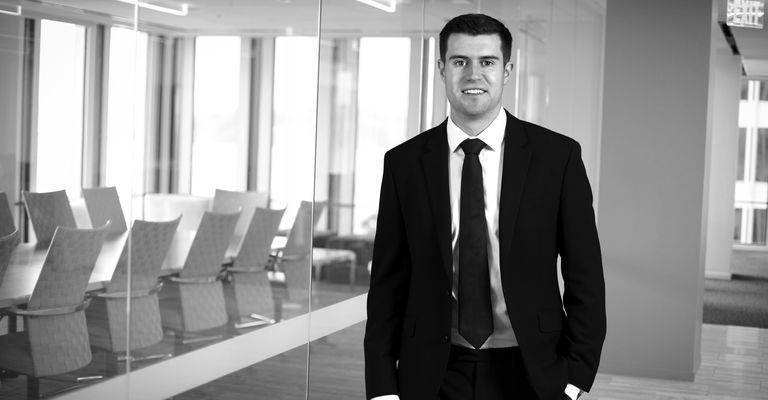Insights
Can cedants aggregate their first and second lockdown COVID-19 losses?
Nov 12, 2020Summary
Jonathan Sacher and Richard Jennings analyse some of the reinsurance implications of the second lockdown
As the UK emerged from lockdown in May 2020, a second wave of COVID-19 (and a second lockdown) was the last thing anyone wanted. 6 months later and that is exactly what we have. For many businesses the requirement to close their doors for a second time, having undertaken so much work to become ‘COVID-19 secure’ will have disastrous consequences on their income, particularly in the run-up to Christmas. Many will be looking once again at their business interruption policies, to identify whether or not they have the ability to make a claim.
The focus for policyholders, insurers and reinsurers as to whether or not cover is available has been on the English Commercial Court judgment in the FCA’s Test Case. As we begin a second lockdown, the eyes of market participants will once again turn to the Courts, as the Supreme Court prepares to hear the appeals of the FCA, Hiscox Action Group, and Insurers in a 4-day hearing commencing 16 November.
Although we do not know how the Supreme Court will decide issues of coverage, causation and trends clauses, their ruling is unlikely to lead to a difference in coverage between a policyholder making a successful claim on their BI insurance resulting from the first lockdown or the second lockdown. The circumstances are broadly the same. In both cases, the Government imposed a nationwide lockdown amidst rising COVID-19 cases across the country, in order to save lives and not overwhelm the National Health Service. Linked, but slightly distinct from this, is the question of additional or separate losses due to regionalised lockdowns.
It is in this context that we consider the reinsurance implications of the latest lockdown(s).
Following the first lockdown many reinsurers and their cedants were considering whether or not there was cover under property catastrophe treaties. Even though losses are unlikely to be as high as were initially reserved for following the Commercial Court judgment, cedants across the market were still considering whether or not they could aggregate their BI losses stemming from COVID-19 as a series of losses arising out of one “event”, one “cause”, one “catastrophe” or any other trigger word found in property catastrophe treaties.
“Event” and “cause” have a well-established meaning in reinsurance law. In our earlier articles on the reinsurance implications of COVID-19, we considered whether COVID-19 losses could be aggregated on an “event” or “cause” basis. That article, written long before the FCA’s Test Case was even contemplated, can be found here.
What then of a cedant’s ability to aggregate COVID-19 losses on a “catastrophe” basis? Unlike “event” and “cause” English authority on the meaning of “catastrophe” is scarce. In the absence of such authority, whether or not COVID-19 losses “arise out of one catastrophe” will undoubtedly be debated at length (and perhaps even arbitrated or litigated) between cedants and their reinsurers. Is “catastrophe” akin to “cause”? Is it another word for “event” or “occurrence”? Is it somewhere between the two on the spectrum? Does a “catastrophe” require some kind of physical disaster to have taken place? These are all questions that cedants, reinsurers and their advisers will be grappling with in the months and years ahead.
How does a second, or the regional lockdowns, fit into this complex reinsurance web?
The starting point must be to consider the underlying policies. It is important not to forget that the Notifiable Disease clauses (which the Commercial Court, on the whole, determined were more likely to provide cover than Prevention of Access clauses) often included low sub-limits - say £50,000 or £100,000 in the aggregate in any 12 month period (although sometimes on a per claim basis) - or were time limited (i.e. a policyholder could only claim for a maximum period of 3 months in any 12 month period, or on a per claim basis). How many businesses which had the benefit of a Notifiable Disease extension will have used up an aggregate sub-limit or maximum claim period as part of the first lockdown? One would imagine quite a few.
Accordingly, the sub-limits in some underlying policies may curtail the number of claims that insurers face as part of the second lockdown. However, assuming some policies do not have sub-limits, or other creative arguments can be found as to why this second lockdown means a new claim can be made, what impact might that have on the reinsurance position? Will a cedant be able to aggregate second lockdown losses with first lockdown losses as a series of losses that arise out one “event”, “cause”, or “catastrophe”?
In our view, a cedant might find it a challenge to argue that second lockdown losses can be aggregated with first lockdown losses where “event” based aggregation is permitted under the terms of a property catastrophe treaty. For starters, it would seem a stretch to say that second lockdown losses share the essential unity of time with first lockdown losses. The same would be true of regional lockdowns in Liverpool, for example, as well as those in other parts of the UK like Scotland and Wales.
Cedants permitted to aggregate a “series of losses arising out of one cause” are likely to have a much stronger argument for the aggregation of first and second lockdown losses. As explained in our article linked above, “cause” wording allows for much wider aggregation than “event” wording. If “cause” is intended to focus on ‘why’ something happened (rather than ‘what’ happened), it is of significance that the desire of the Government when imposing both lockdowns was to preserve life, halt the spread of COVID-19, and not overwhelm the National Health Service. As such, in our view a cedant would have a good argument for saying that the COVID-19 pandemic could be considered a single “cause” which unites the first and second lockdown losses. It is arguable that the same is true for the regionalised lockdowns in England, and other parts of the UK.
What about the aggregation of first and second lockdown losses by “catastrophe”? That largely depends on how the word will be interpreted in the context of COVID-19 losses by Courts, Arbitrators, and the market, in particular whether it is more akin to an “event” or a “cause”. It may also depend on whether an hours clause exists within the treaty, as is commonly the case where “catastrophe” based aggregation is permitted. In such circumstances, even if “catastrophe” is considered to have a wide ‘cause-like’ meaning, a cedant’s single loss occurrence may well be limited to those losses that are triggered within a consecutive 72 hour or 168 hour period. Therefore, a cedant’s ability to aggregate first and second lockdown losses is going to be very limited indeed given the 4-6 month period between national lockdowns. Though a cedant often has the right to pick the particular time and date its 72 or 168 hour period starts, this will have little impact in this instance, and the cedant could be left having to aggregate its first and second lockdown losses as separate loss occurrences despite the width of “cause” or potential width of “catastrophe” based aggregation.
Related Practice Areas
-
Insurance
-
Reinsurance Transactions & Disputes




